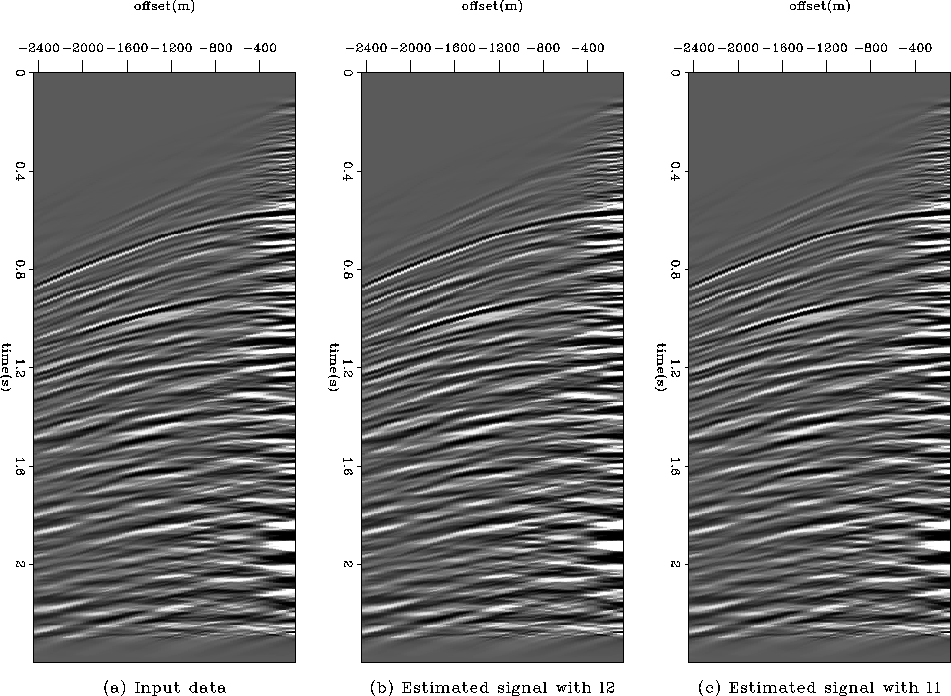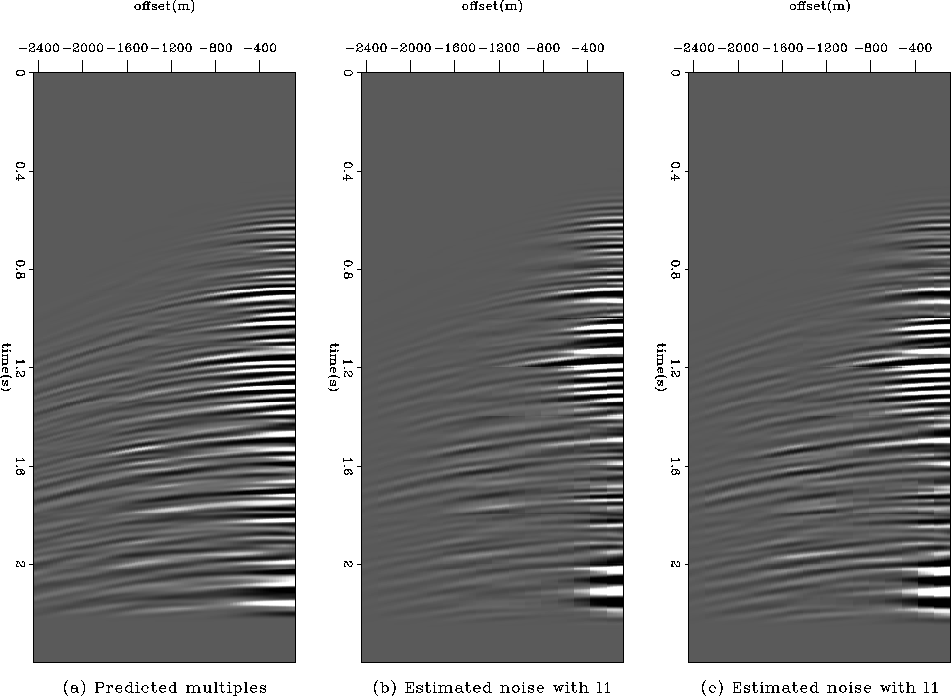




Next: Conclusion
Up: Guitton and Verschuur: adaptive
Previous: Poststack land data multiple
The above methodology has also been tested on a shot record
from a land data survey. The preprocessing and multiple
prediction is described by Kelamis et al. (1999).
I display in Figure 14a the
selected shot record. Figure 15a shows the predicted
multiples. Note that these multiples are the ones that
are directly generated by the shot
record based convolutions Berkhout and Verschuur (1997) and no adaptation has been applied yet.
Both  and
and  adaptive subtraction has been carried out for this data.
The resulting records are displayed in Figures 14b and c, respectively.
The removed multiples are shown in Figures 15b and c.
adaptive subtraction has been carried out for this data.
The resulting records are displayed in Figures 14b and c, respectively.
The removed multiples are shown in Figures 15b and c.
Figures 15b and
15c demonstrate that the multiples are better
attenuated with the  -norm for long offsets.
Although the truth cannot be revealed from these results, it appears
that the
-norm for long offsets.
Although the truth cannot be revealed from these results, it appears
that the  results are more reliable.
results are more reliable.
comp.s.4
Figure 14 Example of adaptive
multiple subtraction for land data. a) One selected shot record from
a land survey. b) Estimated signal after  adaptive
subtraction. c) Estimated signal after
adaptive
subtraction. c) Estimated signal after  adaptive subtraction.
adaptive subtraction.
![[*]](http://sepwww.stanford.edu/latex2html/movie.gif)




 comp.n.4
comp.n.4
Figure 15 a) Predicted multiples
for Figure 14a. b) Removed multiples
with  adaptive subtraction. c) Removed multiples with
adaptive subtraction. c) Removed multiples with  adaptive subtraction. Far offset multiples are better attenuated with
the
adaptive subtraction. Far offset multiples are better attenuated with
the  -norm between 1.2 and 1.8 seconds.
-norm between 1.2 and 1.8 seconds.
![[*]](http://sepwww.stanford.edu/latex2html/movie.gif)










Next: Conclusion
Up: Guitton and Verschuur: adaptive
Previous: Poststack land data multiple
Stanford Exploration Project
6/7/2002
![]() -norm for long offsets.
Although the truth cannot be revealed from these results, it appears
that the
-norm for long offsets.
Although the truth cannot be revealed from these results, it appears
that the ![]() results are more reliable.
results are more reliable.

![[*]](http://sepwww.stanford.edu/latex2html/movie.gif)

![[*]](http://sepwww.stanford.edu/latex2html/movie.gif)